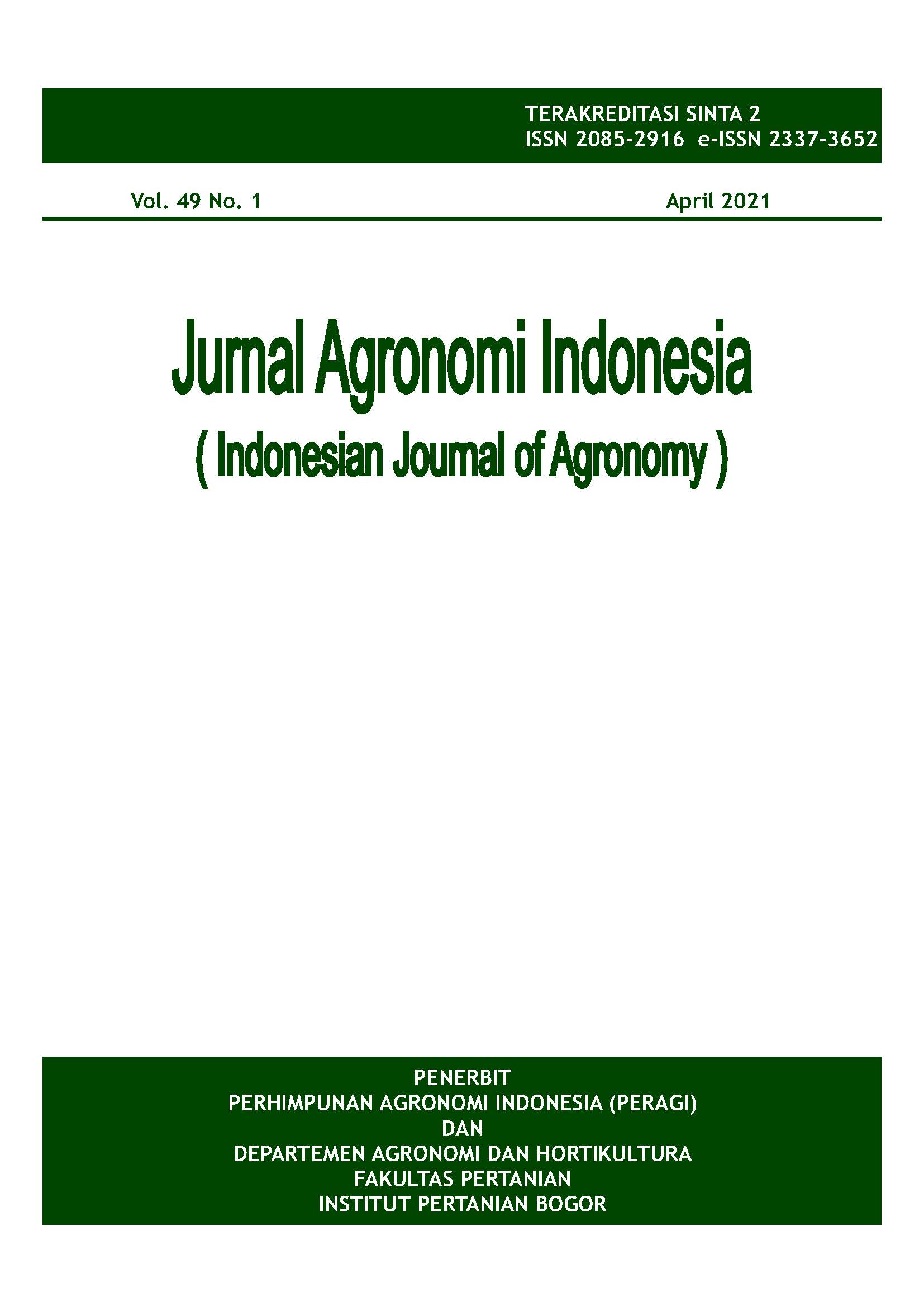Studi Pemangkasan dan Aplikasi Sitokinin-Giberelin pada Tanaman Teh (Camellia sinensis (L.) O. Kuntze) Produktif Klon GMB 7
Abstract
Pruning of tea plants is carried out in productive tea plantations with varying types and heights of pruning. Pruning causes most or all of the photosynthetic organs of the plant to be lost, and regrowth of new shoots takes about 2-3 months. The addition of cytokinins benzyl amino purine (BAP) and gibberellin (GA) is expected to accelerate shoot growth after pruning. The purpose of this study was to determine the effect of pruning, BAP and GA application on the growth and yield of tea shoots after pruning. The experiment was carried out in Tea and Cinchona Gambung Research Center from August 2017 to October 2018 using a split split plot design consisting of type of pruning as the main plot (clean pruning and lung pruning), pruning height (40 cm, 50 cm, and 60 cm) as the subplot, BAP and GA application as the sub-sub plot (0 ppm, 60 ppm BAP, 50 ppm GA, 60 ppm BAP + 50 ppm GA). The results showed that clean pruning and 60 ppm BAP + 50 ppm GA produced the best growth on shoots height. Pruning height of 60 cm and 60 ppm BAP showed the highest leaf chlorophyll index of third months as much as 91.58 (higher compared to previous research results of 62.5-75.28), while the pruning height of 60 cm and 60 ppm BAP + 50 ppm GA produced the highest fresh shoot weight per shrub. Individually, 50 cm pruning height reduced the number of dormant shoots and 50 ppm GA shortened the length of shoot dormancy to 22 days.
Keywords: banji shoots, productive tea, shoots dormancy













